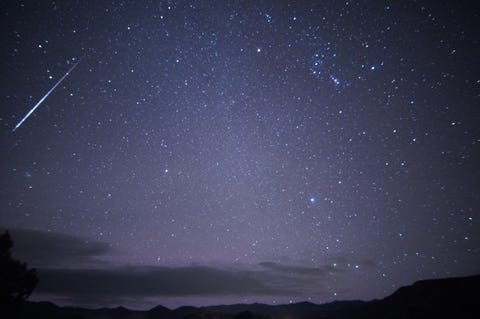
Every year in mid-to-late October, Earth passes through a stream of debris from comet Halley and the pre-dawn sky lights up with a pretty display of shooting stars. Expect to see over 20 meteors per hour during the peak. According to NASA, the Orionid meteor shower isn't the strongest, but it is one of the most beautiful showers of the year. The reason is its setting. The shower is framed by some of the brightest stars and planets in the heavens. Constellations such as Orion, Taurus and Gemini provide a glittering backdrop for the display. Although Orionids emerge from a small area near the shoulder of Orion, they will spray across the entire sky. Be prepared for the speed. Meteoroids from Halley's Comet strike Earth's atmosphere traveling 148,000 mph (238,000 km/h). Only the November Leonids are faster. Speed is important because fast meteors have a tendency to explode. Occasionally, Orionid fireballs will leave incandescent streams of debris in their wake that linger for minutes. To see the show, experts suggest going ouside one to two hours before sunrise, ... when the sky is dark and the constellation Orion is high overhead. Orionid meteors are visible from anywhere on Earth and can be seen anywhere across the sky. If possible, get far away from city lights (which can hinder the show). So, log off, pack up your stargazing kit and enjoy the show. Wish you clear dark skies!
https://youtu.be/_2EMNOG2ArE






 Sat Mar 23, 2024 11:33 pm by globalturbo
Sat Mar 23, 2024 11:33 pm by globalturbo

